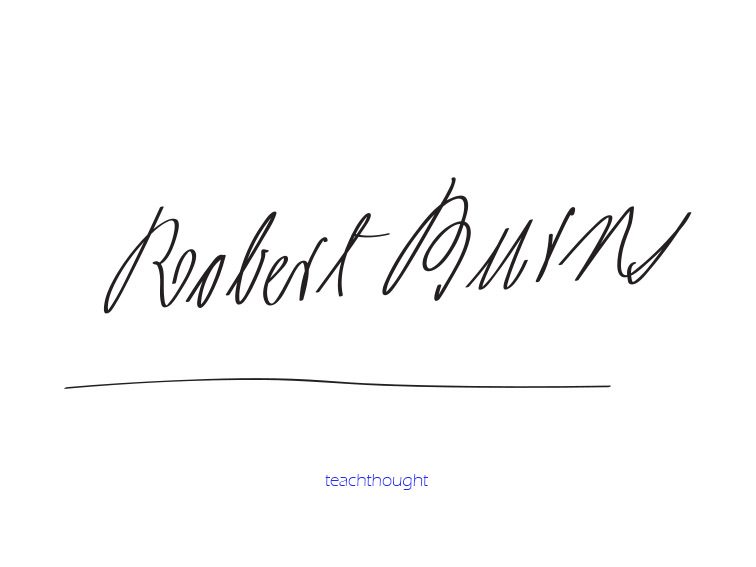 Editing Robert Burns For The 21st Century
Editing Robert Burns For The 21st Century
by Dr. Pauline Mackay, Lecturer in Robert Burns Studies, University of Glasgow
Here at the University of Glasgow’s Centre for Robert Burns Studies, we are undertaking a major project to edit Robert Burns’s works for the 21st Century.
Funded by the Arts and Humanities Research Council and led by Professor Gerard Carruthers (General Editor), the project team is working to produce the multi-volume New Oxford Edition of The Works of Robert Burns; has established an innovative website, including social networking, with the wider global Burns community; has commissioned, recorded and uploaded new performances of Burns’s songs to support the OUP edition; and has hosted a number of events including conferences, performances, key-note lectures, symposia and exhibitions.
A project on this scale has never been undertaken in Burns studies. By making use of 21st century digital resources, and by adopting 21st century editorial practices, we are better placed than ever before to offer a fully (and extensively) annotated scholarly edition of the bard’s works that considers the fullest possible ranges of manuscripts, printed books and many other sources for his poetry, song, prose and correspondence.
The first volume of the new Oxford edition, Robert Burns: Commonplace Books, Tour Journals, and Miscellaneous Prose (edited by Professor Nigel Leask), represents a milestone in Burns scholarship. Although most of the items have been published before, they’ve never been gathered together in one volume with introductory material, complete textual resourcing and full annotations, all considered with the context of Burns’s life and historical age.
The ‘Ayrshire’ Commonplace Book (1793-5), the ‘Edinburgh Journal’ (1787-90), and the ‘Glenriddell Manuscripts’ (1792-4) are transcribed from original manuscripts, and offer a fascinating insight into Burns’s creative process, as well as containing unique drafts of many of his most important works.
The Tour Journals see Burns narrate his travels in the Borders and Highlands at the height of his fame in 1787, and reflecting on Scottish culture and society at a time of intense historical change. The project team are also plotting the routes of Burns’s tours on contemporary maps with assistance from the National Library of Scotland Maps Department and, from January 2015, visitors to the project website will be able to read what the bard said about different places that he visited on his journey, and to enjoy some accompanying images as part of this new digital resource.
The volume also collects Burns’s miscellaneous prose writings, ranging from the prefaces to the Kilmarnock and Edinburgh editions of his Poems, through the poet’s blueprint for a circulating, subscription library in Dumfriesshire, to his correspondence in the newspapers touching on matters of contemporary political and social import.
The second volume of the new edition, edited by Professor Murray Pittock, will be The Scots Musical Museum: a collection first gathered by James Johnson (c.1750 – 1811) and one of the canonical texts in the formation of what we now think of as the Scottish song tradition. This particular set of songs is also important in the question: what is the Burns canon?
Until the 1960s, Burns was credited with the authorship of an increasing number of songs in the Museum, until almost 40% of its 600 songs were attributed to him. At the same time, it has long been recognized that many of the questions surrounding the status of Burns’s authorship are in reality unresolved.
What Is The Robert Burns Canon?
Now for the first time, a full annotated research edition of the Museum’s 600 songs will both examine the background and development to Burns and Johnson’s collection, and also, through an archaeology of known eighteenth-century variants, seek to establish which songs were by Burns, which were partly by him, and which he edited and/or collected. The result could change the Burns canon forever.
Following songs for Johnson, the third part of the OUP edition will be edited by Dr Kirsteen McCue who will focus exclusively on Burns’s songs for his second song editor George Thomson (1757-1851), considering these within the context of Thomson’s big and opulent collections of ‘National Airs’.
The close working relationship between Burns and Thomson only lasted from 1792 until the poet’s untimely death four years later. However, manuscripts and relics of Burns’s collaboration with Thomson are the main source of information we have about the bard’s song-writing methods and his opinions of what makes a good song or, indeed, a bad song. Furthermore, Burns was committed to Thomson’s collection and even left Thomson the copyright of many of his songs.
In addition to commissioning songs by Burns and many of his contemporaries, Thomson asked contemporary European composers like Beethoven and Haydn to ‘set’ or ‘arrange’ the melodies for these songs for piano and voice along with parts for violin and cello. And so, Thomson may be credited with initiating the remarkable combinations of Burns and Haydn and Burns and Beethoven, enhancing the poet’s profile internationally.
The Editing Robert Burns for the 21st Century website aims to be a valuable complimentary resource where interested parties can read blogs about the team’s research activities, enjoy several online exhibitions (for example, about ‘Auld Lang Syne’, Burns’s most internationally famous song), and download the many freely available new recordings of Burns’s songs. As we edit Robert Burns for the 21st century, our textual editing, musicological and digital activities must necessarily go hand in hand. We hope that you will enjoy and make use of the end result!
Visit the project website to access resources and freely available recordings: http://burnsc21.glasgow.ac.uk/, and follow us on twitter.
Image attribution wikimediacommons; Editing Robert Burns For The 21st Century
